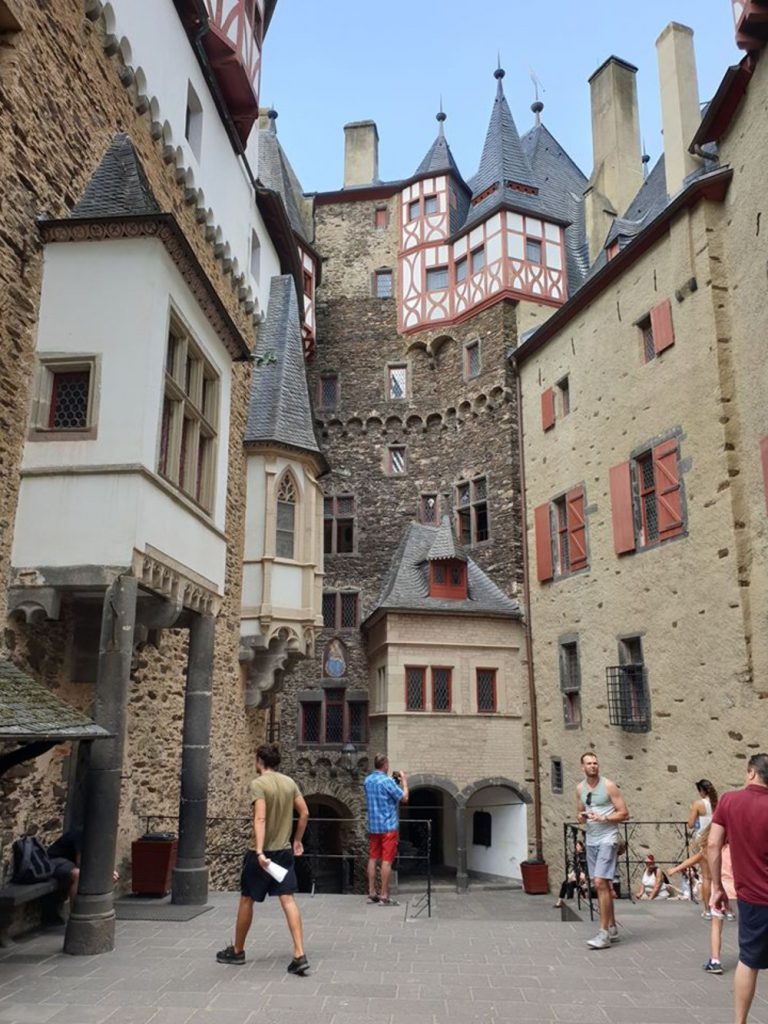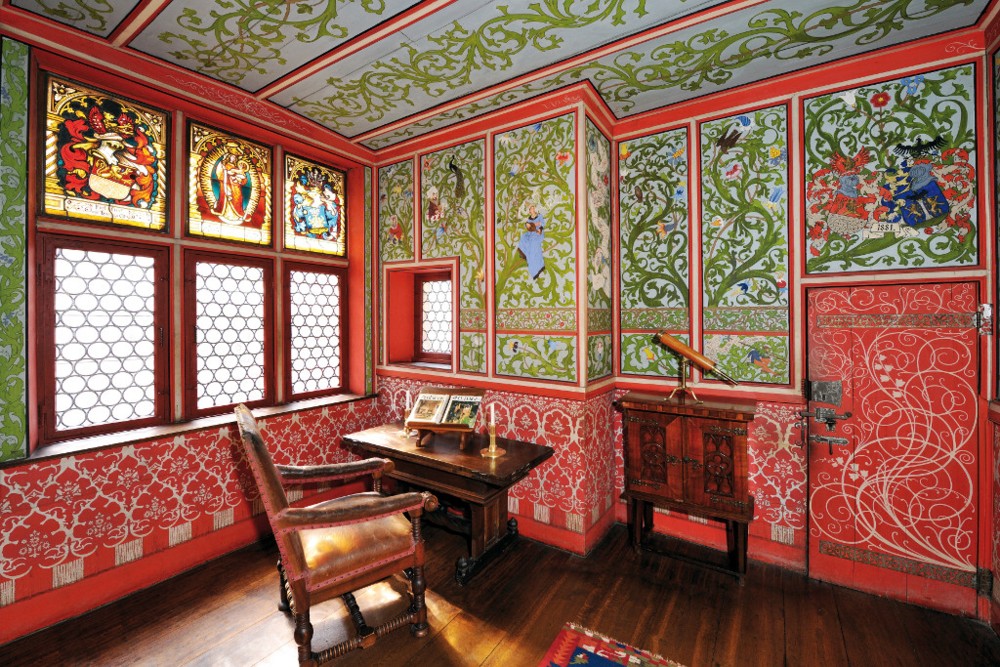Nudged, I’m guessing, by this posting of mine, Michael Jennings earlier this month Facebooked this closer-up photo he had photoed of Eltz Castle:
A classic of ancient adhocistical anarchy, I think you’ll agree. The very definition of picturesque.
But I also show this photo of Michael’s because I think it illustrates the opinion I expressed in this earlier shininess of architectural modernity posting. There is no shininess in the above photo, not even in the windows on show. (The things I like best are always the things that tell me how right I was, I find.)
An obvious reason for that is that the windows seem all to be recessed from the surfaces of buildings. But there seems to be another reason. Take a look at this Eltz Castle photo, this time an interior shot (one of those here):
Very lavish, but that’s not my point. Which is: Look again at those windows, the ones with all the circles. They look like Ancientist fakes to me, but Ancientist or genuinely ancient, what those windows illustrate is that glass existed for a long time before they worked out how to make its surface smooth and flat. Above all, they took a long time to work out how to make big sheets of glass, such as we moderns now take for granted. And it’s that total absence of large and smooth and shiny surfaces that does so much to explain the different atmosphere radiated by ancient architecture.
At Eltz, you might get occasional flashes of light, little splinters. And you can see great stuff in old windows, from the inside, as the above photo also illustrates lavishly. But you’re never going to see anything reflected in glass like that, outside. Not any Thing, that you can recognise.



I went on a tour of the inside of the castle. This was worth doing, but there was a prohibition on taking photographs inside. All photos of the inside you see are likely to have been carefully staged rather than taken by random visitors such as myself.
An interesting quality of this type of castle is that although it belongs to a single family – the castle is privately owned and still belongs to that family – the castle has always been divided between three different branches of that same family. As well as the parts of the castle being of different architectural styles depending on when those parts were built, different parts of the castle built at the same time have different architectural styles due to members of different branches of the same family having different tastes. The result is extremely charming, I think. The Germans consider the castle to be a national treasure sufficiently that its picture was on the 500DM banknote from 1965 to 1992.